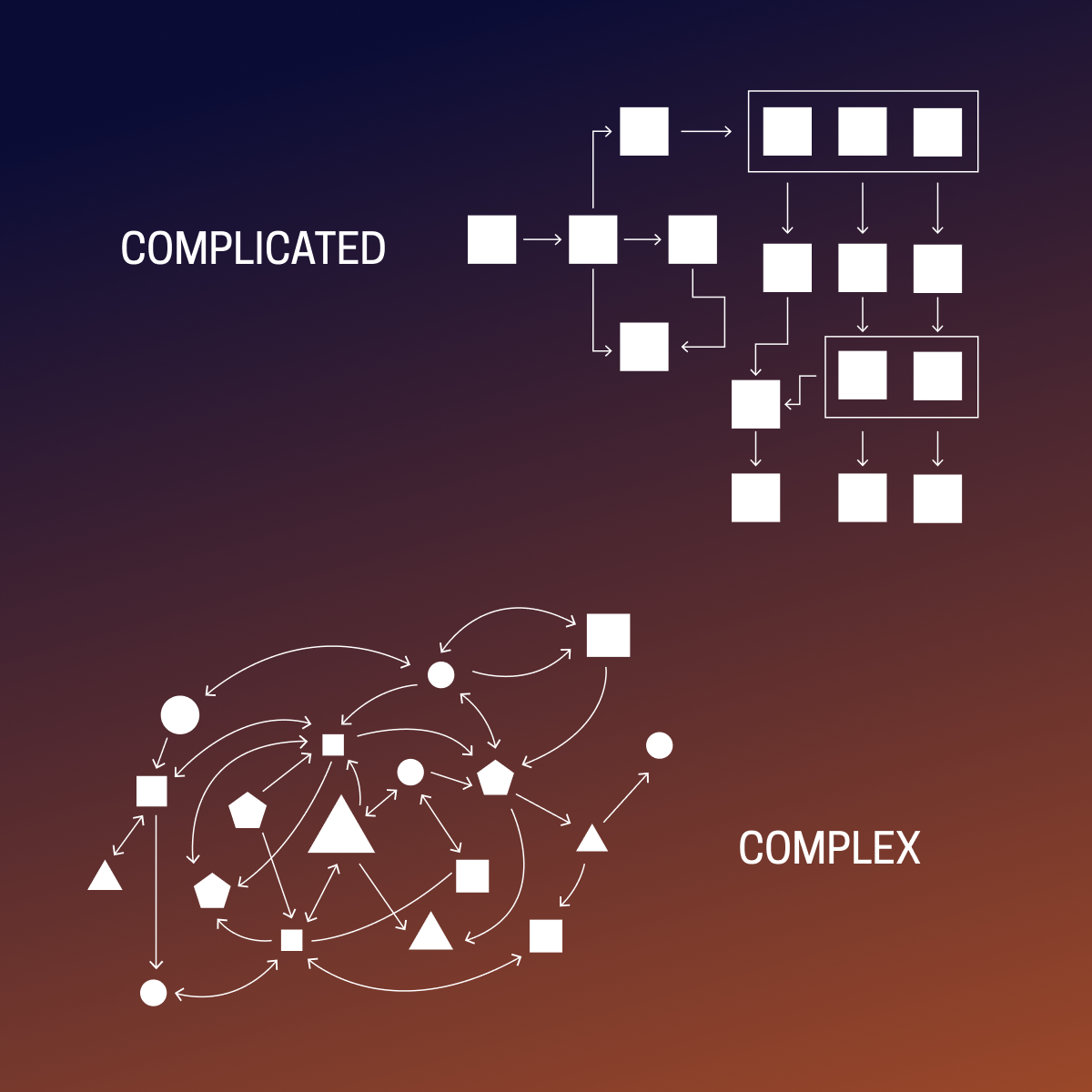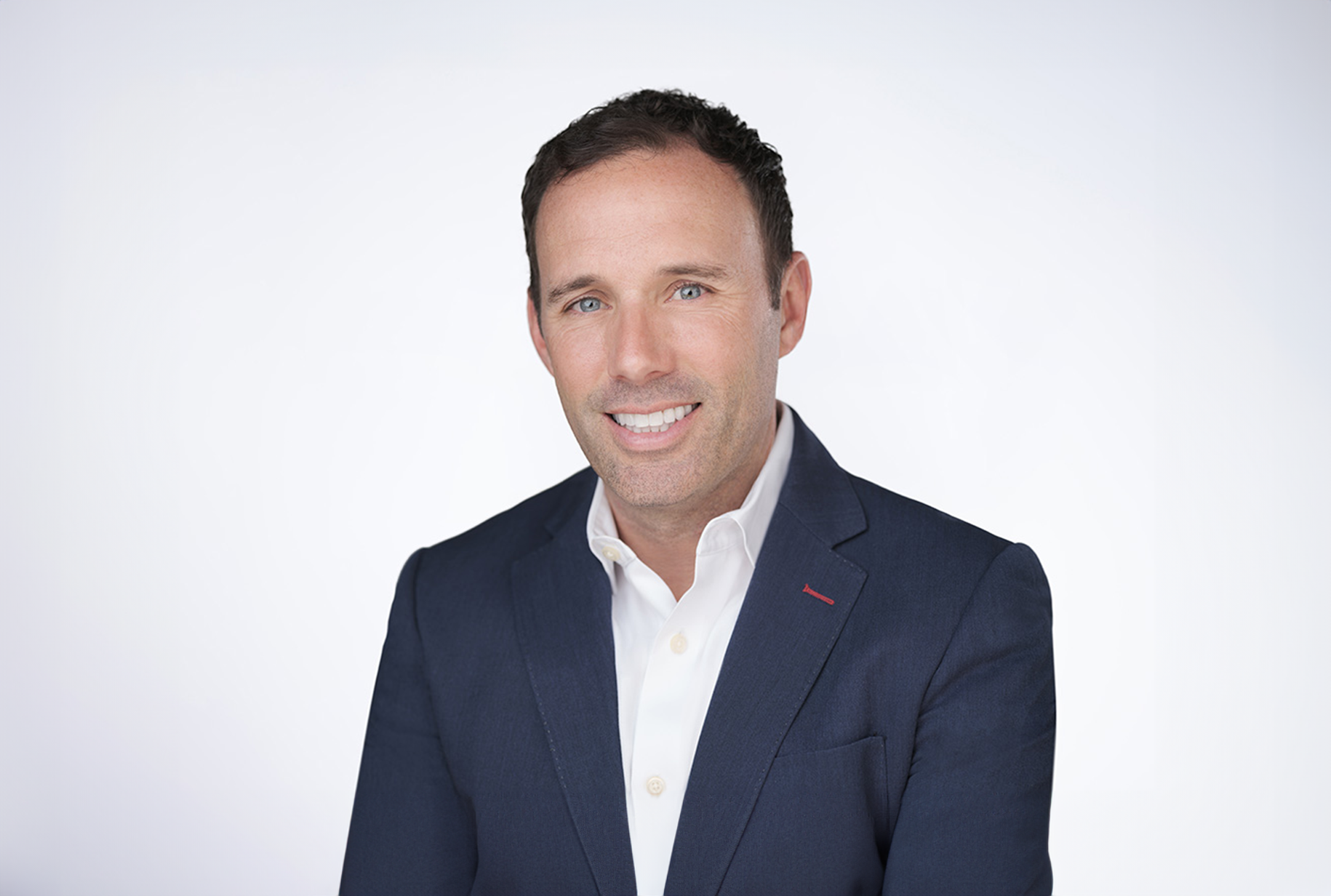From workforce shifts to economic volatility, the complexity of our modern landscape requires a new set of leadership skills and behaviors to guide teams. Complexity isn’t necessarily a bad thing; it's simply the new normal that most organizations operate in today, requiring a shift in thinking and approach to leadership.
Complexity makes it harder for teams to see how their work contributes to organizational success and overarching goals. Employees tell us as much. Our data show that only about half of employees agree that their leaders articulate how their team’s goals contribute to broader organizational objectives. While people may indicate that they understand how they, as individuals, fit within their team, they are much less likely to agree that they understand how their team’s goals fit within a broader organizational context.
Team of Teams by General Stanley McChrystal offers valuable insights into the nature of complexity and its implications for leaders. McChrystal distinguishes between complicated and complex systems, noting that traditional hierarchical structures, suited for managing complicated systems, struggle to adapt to the complexities of today's interconnected world.
In the complex domain, there are an unknowable number of inputs, and the output is unpredictable. You can’t consistently predict what will work in this environment, and so, detailed planning and giving orders can lead to failure. The complex domain is where leading like a gardener becomes infinitely more important. In the information age, vast amounts of data, a high degree of interconnectedness, and unprecedented speed of communication have ushered organizations and their leaders into a new way of operating, and, with it, managing people. As such, complex problems are unpredictable and require a dramatic shift in the way we lead and work.
Take, for example, the top manager at your local Walmart. Think your role is significantly different than theirs? Think again.
“They determine success or failure,” Walmart’s Chief Operating Officer for U.S. Kieran Shanahan tells the Wall Street Journal about store leaders. As Walmart shifts to automated systems, managing a store is becoming more complex, he adds.
When asked about the biggest challenge in her role as a Walmart store manager in Bellmead, Texas, Nichole Hart told the Journal it is the day-to-day uncertainty.
“You don’t know what you are going to walk into,” she says.
The heart of a Walmart manager’s complex portfolio of responsibilities is the intersection of employees, customers, and technology. Interactions with staff reveal the intricacies of human relationships within the workplace, where mentorship and trust-building play crucial roles.
As organizations everywhere embrace automation and technology-driven solutions, the landscape of management evolves deeper into the realm of complexity. A manager’s ability to navigate this complexity hinges on their capacity to make sense of ambiguous situations, anticipate challenges, and adapt with speed.
More so now than ever, leaders must adopt a unique set of behaviors to excel in a complex world. Those who successfully lead adaptable and high-performing teams demonstrate these skills consistently:
Prioritizing Resources
Tolerating Tension
Leveraging Knowledge
Seeking Perspectives
DO THIS
The first step [to prioritizing effectively] is the realization that we can try to do everything average, or we can do a few things brilliantly.” - Kelly Kuhn
Many leaders prioritize resources based solely on immediate needs or the loudest voices within the organization. Instead of focusing solely on short-term demands, leaders should prioritize resources based on long-term strategic goals, even if it means reallocating resources away from current priorities. In a complex environment, it's essential to invest resources where they will have the most significant impact over the long haul, rather than simply addressing urgent but potentially fleeting needs.
The Stop, Start, Continue exercise is a simple and pragmatic approach to identifying your key priorities for delivering the strategy. But specificity is key! Together with your team, go through the following categories and ask:
STOP: What specific actions need to stop?
START: What specific actions need to start to deliver the initiatives identified?
CONTINUE: What specific actions need to continue to deliver the initiatives identified?
Then, use the 100 Pennies exercise to rank priorities that emerge from Stop, Start, Continue from the most important to the least important so that you can effectively assign the resources to those priorities required to deliver the desired outcomes.

Leaders often strive to maintain harmony and avoid conflict within their teams, fearing that tension could disrupt productivity and cohesion. Rather than shying away from tension, leaders should actively cultivate it within their teams. Tension, when managed constructively, can fuel innovation, creativity, and growth. By encouraging healthy debate and constructive dissent, leaders create an environment where diverse perspectives are valued and new ideas are born.
There is no better way to demonstrate the tolerance of tension than how leaders successfully harness conflict to drive learning and growth, rather than descending into unproductive tear downs. This can be as tactical as how leaders give feedback or in ways that leaders promote “task” conflict, as opposed to “relational” conflict. Being able to neutrally state what’s been observed and what the impact was, and then inviting a team member to explain their side moves a conflict from being a you vs me problem to one where we are working to solve the problem in front of us. Being able to neutrally state what’s been observed, what the impact was, and then inviting a team member to explain their side moves a conflict from being a you vs me problem to one where we are working to solve the problem in front of us.
While it may not work for all meetings, strategically incorporating clear ‘rules’ for tolerating tension can also lower the heat of any resulting arguments. Techniques that structure the conversation, like running a Red Team activity such as a Pre-Mortem exercise or utilizing the Six Thinking Hats where participants adopt different thinking styles like optimistic, critical, and emotional, etc. to create a system for the team to explore different perspectives, fostering constructive arguments and focusing on finding the best answer. As a result, the team-led conflict leads to demonstrably richer insights and more robust decision making.

It’s often easy – and part of human nature – to rely solely on our own expertise or the knowledge within one’s immediate circle. But this can lead to overlooking valuable insights from diverse sources. Instead of assuming you have all the answers, leaders should actively seek out knowledge from unconventional sources and perspectives. This means engaging with individuals both inside and outside the organization who offer different viewpoints or expertise. Embracing diverse knowledge not only enhances decision making but also fosters a culture of continuous learning and adaptability.
One of the fastest ways to expand our knowledge is through adding new people to our network, people who may bring fresh ideas and perspectives or connect us to previously inaccessible resources. We call these “loose ties,” which in contrast to the tight ties of the people we most often interact with, are more casual connections that may span across different departments of the organization. To expand these ties, leaders can encourage team members to participate in cross-functional projects or inter-departmental task forces to bridge gaps or proactively invite others from across the organization to participate in regularly scheduled meetings.
Leaders can also intentionally act as brokers by connecting individuals who have complementary needs and knowledge, facilitating meetings or introductions that might not occur naturally. To be effective in this role, leaders need to map out the existing network within the organization. This involves the following:
- Understanding who holds specific knowledge and recognizing potential gaps or opportunities for knowledge exchange
- Curating and sometimes translating information to ensure it is accessible and understandable to all parties involved
By taking up the role of a knowledge broker, leaders play an active role in connecting different people and facilitating the exchange of information and ideas across a network of loose ties. Further, by increasing the number of strengthening the sinew of organizational loose ties, leaders build a network that is more connected and capable of transformation as the environment changes. 
Some leaders tend to surround themselves with like-minded individuals or rely on a small inner circle for advice and feedback. Rather than seeking validation from familiar voices, leaders should actively seek out dissenting opinions and diverse perspectives. This means encouraging open dialogue and creating a safe environment for team members to express differing viewpoints. By embracing dissent and welcoming diverse perspectives, leaders can uncover blind spots, challenge assumptions, and make more informed decisions. In a complex environment, harnessing the collective intelligence of a diverse team leads to more robust solutions and better prepares the organization to navigate uncertainty and change.
At Amazon, founder Jeff Bezos famously speaks last at meetings he attends.
“I know, from experience, if I speak first, even very strong-willed, highly intelligent, high-judgment participants in that meeting will wonder, ‘If Jeff thinks that? I came into this meeting thinking one thing, but maybe I'm not right,’” Bezos said on a recent podcast.
This allows everybody to feel that they have been heard and that they have contributed. Further, leaders benefit from hearing what everybody else thinks before offering their own opinions.
Efficiency remains important, but the ability to adapt to complexity and continual change has become an imperative." - Stan McChrystal
Leaders must recognize that complexity is not a challenge to be avoided but an opportunity to be embraced. However, these leadership behaviors needed to thrive in a complex world are hard earned, and sometimes even harder to know where to start.
Identifying and understanding a leader’s tendencies along the four critical behaviors outlined needed to lead teams in highly complex environments is the first step in becoming a leader suited for today's complex world. As General McChrystal aptly states, "the world is complex, but it need not be chaotic. Leaders who understand this reality will thrive in the face of uncertainty."
Interested in learning more about developing these behaviors in yourself or members of your team? Connect with us here.



